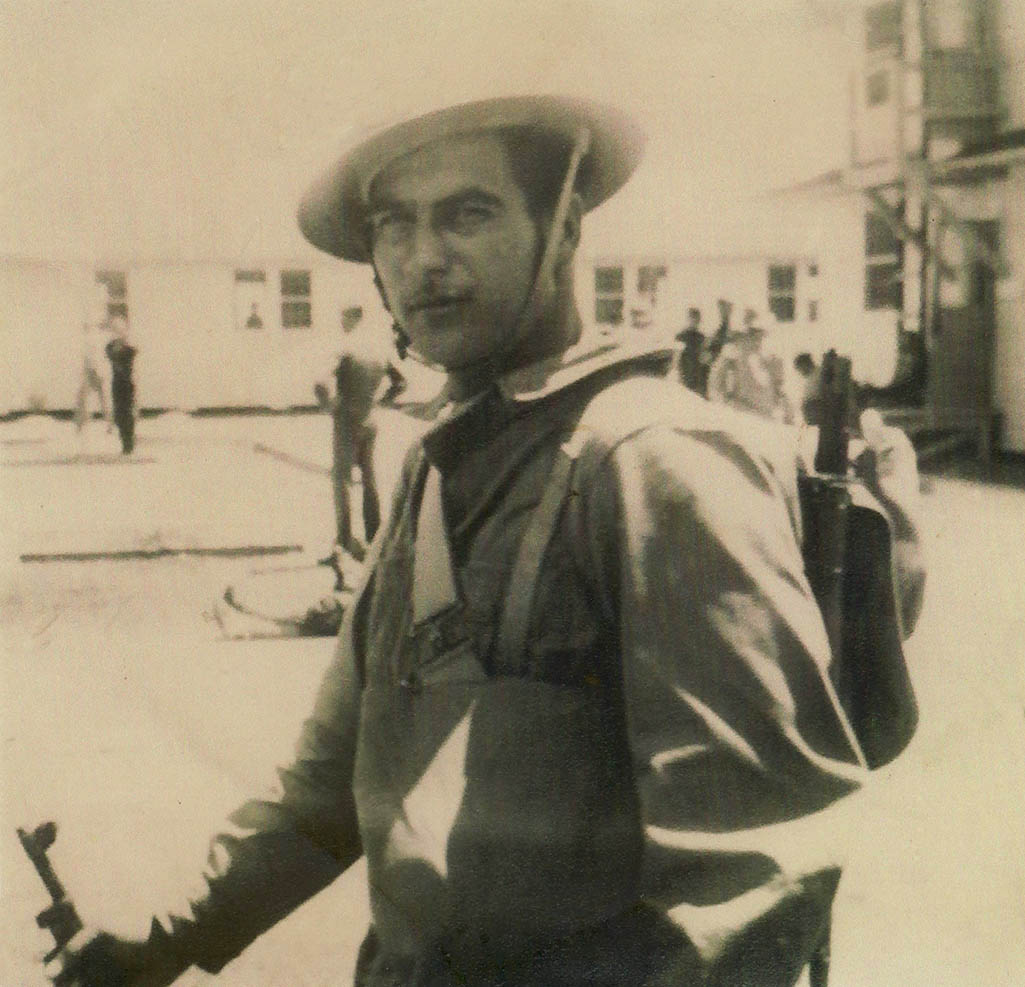
STAFF SERGEANT FRED HOLGUIN
U.S. ARMY
Born in El Paso, Texas on April 28, 1920, Fred Holguin is a World War II hero. He fought for his country during a crucial time in history when the majority of the world’s nations were at war. One hundred million military personnel participated turning it into the biggest war ever.
As Adolf Hitler became the leader of Germany in 1933, democracy was out the window. Hitler became obsessed with abolishing certain races, particularly the elimination of the Jewish people. During this dark time, over 70 million people were killed.
Holguin’s recollection of the war brings back many painful memories. According to this brave soldier, “The war followed me and would have a lasting impact on my family and on all of those around me.”
Having grown up during the Depression, Holguin said, “I stopped going to school after the ninth grade. My family didn’t have enough money so school was not as urgent as putting food on the table. I worked picking oranges and lemons in the fields.”
However, life changed when Holguin turned 11-years-old. His family packed up and moved to Los Angeles to a town called Palo Verde (where Dodger Stadium is today).
“This was back in 1935,” explained Holguin. “The neighborhood consisted of Russian, Italian and Mexican immigrants.”
Selling newspapers on Fifth and Broadway in Downtown Los Angeles, Holguin made a penny per paper.
“Afterwards, we’d go for breakfast and order hotcakes for five cents – back when a penny had value,” remembered Holguin.
On his paper route, Holguin often passed a boxing arena and would hang out there. The pros let the kids come inside and Holguin would enthusiastically watch them train. Occasionally, he’d even get the chance to hit the bag.
As Holguin grew older, jobs became scarce and although he worked in a magnesium plant and steel foundry, neither one lasted.
“There I was with no money, no job, and apparently no future,” recalled Holguin.
Word War II began in 1942 and at the age of 21-years-old, Holguin was drafted into the Army.

“The idea to join the Army never crossed my mind because I was just trying to survive,” Holguin noted.
Leaving Los Angeles, Holguin headed for Puerto Rico where he guarded the “coast from attack.”
“I was in the 66 Coast Artillery in the Army and I stayed there for about 13 months. Then, they moved me to Georgia.”
Holguin’s past met up with his present when a Lieutenant in San Juan, Puerto Rico asked for volunteers for a boxing tournament. Holguin was ordered to step forward when no one stepped up to participate. He went up against his friend and won. From then on out, the lieutenant had a new respect for him.
“He [Lieutenant] had me fight more often,” said Holguin. “He asked how I learned to fight and I replied, ‘I didn’t.’ But I did know how to defend myself.”
Holguin was eventually assigned to a Search Light Outfit on the Island of Puerto Rico.
“We were looking for any airplane attacks…Germans…Japanese. We had .37MM guns. Every night, we would go out and look at the sky and listen to our gear, which beeped if any enemy planes were coming.”
Having moved up in the ranks, Holguin was eventually assigned to another town where he was an MP.
“I’d go around town at night all shiny and pressed up with my .45 and this was a cool job. Definitely a step up.”
At Camp Stewart in Georgia, Holguin worked with HMO (Heavy Maintenance Ordinance Company). He went to school and graduated as Mechanic on Heavy Maintenance.
“On one occasion, I was in the mess hall and I saw there was room at a table seated with Caucasians and I was told there was no room there for our kind,” remembered Holguin. “I found a group of Hispanics, like six guys, and we hung out and just kept out of trouble. Back then, it was normal for the Caucasians to not like the Hispanics so we thought nothing of it. This was just everyday life in America—hate the Hispanic. We sat in the balcony at theatres and in the back of the bus. That’s just the way it was.”
However, according to Holguin, a high-ranking officer gathered roughly 200 whites, blacks and Hispanics and told them that he did not want to see any kind of discrimination.
“He had heard of a couple of problems on the base and he told us that when we go to battle we all belonged to the same American Army. When we go to battle, we will be hugging each other, no matter what color or race we are. After that moment, things changed for the better.”
In 1943, Holguin was shipped to Europe on the USS George Washington. The trip took nearly an entire month
“There were a thousand U.S. ships in the convoy,” said Holguin. “It was very dangerous because the German Wolf Pack attacked from everywhere with submarines and airplanes, so we ‘zigzag’d’ our way across the Atlantic Ocean. We would drop MK-7 ash cans and there were torpedo battle ships as part of the convoy. We felt the explosion when a submarine hit one of our ships from the convoy. We could see the fire far back in the convoy and knew one of our ships was destroyed.”
Holguin arrived at Camp Lucky Strike in Marcel, France and worked on the vehicles going to the front line. This lasted for several months. In Germany, when the war was in its early stages, Holguin worked in the department for Heavy Maintenance.
“I used to go to the front line to pick up and fix the trucks and tanks,” said Holguin.
We would go out, just two or three guys, a tow truck and some tools. It was a very dangerous job going to the front and retrieve vehicles. The streets were very narrow and we had to turn and back up but we made it back every time. We carried our map and we both carried an M-1 rifle. We picked up anything, even tanks, it did not matter.
“One time, I remember going on a mission. The night before the mission, our Lieutenant told me and five other guys to be ready the following morning at 5AM. He said to grab all the tools that we need as well as our weapons. I had my .45, my machine gun and grenades. That morning, he took us way inside Berlin to an area where all kinds of trucks and tanks were stored. It was an airport and also served as a storage facility to keep vehicles.”
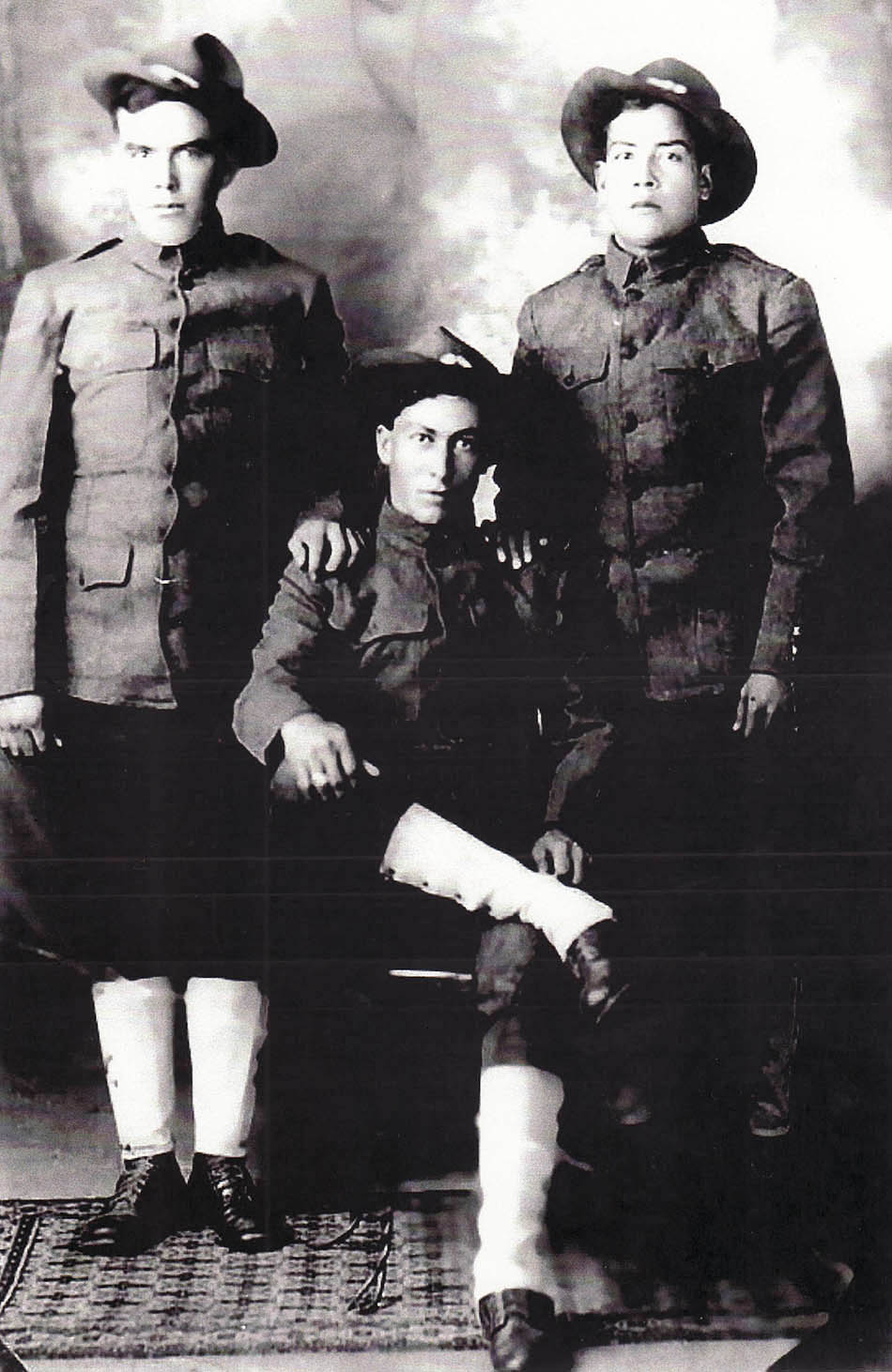
“Good luck and take care of yourselves,” said the Lieutenant.
“He left us there to guard the airplanes and pilots,” Holguin recalls. “So, for five days in late 1944, five of us stayed at the airport in Berlin taking care of a bunch of airplanes and pilots, not understanding how we got into this mess.
“If they attacked us, what were the five of us going to do?”
Luckily, nothing happened and in 1945, Holguin traveled on the USS Richardson to Marcel, France.
“We were getting ready to invade Japan when the first atomic bomb hit Hiroshima on August 6,” he said. “The second atomic bomb hit Nagasaki, Japan on August 9.”
The catastrophe caused their mission to change directions and Holguin and his crew were rerouted to Camp Kilmer in New Jersey.
“From there, we were supposed to take a plane to San Francisco but the plane was overcrowded,” Holguin said. “So, a group of us traveled by train to Fort McArthur in San Pedro, California.
“We learned later that the plane we were supposed to be on crashed and all the people inside died,” recalled Holguin.”
After serving three years, nine months and nineteen days, Holguin was released from service. It was November 19, 1945. Readjusting to “civilian life” proved difficult. The solider humbly admits that he began to drink heavily. He was living in a state of shock.
“It was very, very difficult to adjust to people due to the post traumatic stress of war,” Holguin explained. “Civilians had no clue what a soldier feels when he is in constant danger. My family sent me to the Veterans Hospital in Pasadena, California. I was 25-years-old. I passed out for three days and waking up in the hospital was a surprise. You could see the bridge that was called Suicide Bridge during the depression from our window.”
After his stay at the hospital, Holguin quit drinking, bought a house in Pico Rivera, and made a promise to himself to stay sober, get married and raise a family. He now is happily married with one daughter and three sons.
“In 1967, I started working at McDonnell Douglas Aircraft Company and I’m still there,” the 87-year-old war veteran stated on the day of interview.”
His company, now called the Boeing Company is Holguin’s second home.
“I am not sure if I will retire,” Holguin stated. “It feels good and gives me somewhere to go. As a Hispanic, I am proud of the contributions we have made and continue to make to our country and the war effort. I know there were many Mexicans and Puerto Ricans who came and volunteered during WWII.
“These contributions hit home for me. My nephew Devan Cardenas was a casualty of the Iraq war. He was only 18-years-old. He wanted to serve and fight for his country. He was a Paratrooper and a proud soldier. In a freak accident, he was killed while training to go to Iraq. I will always miss him.”
— Story by: Megan Rellahan - Interview by: Alfredo Perez
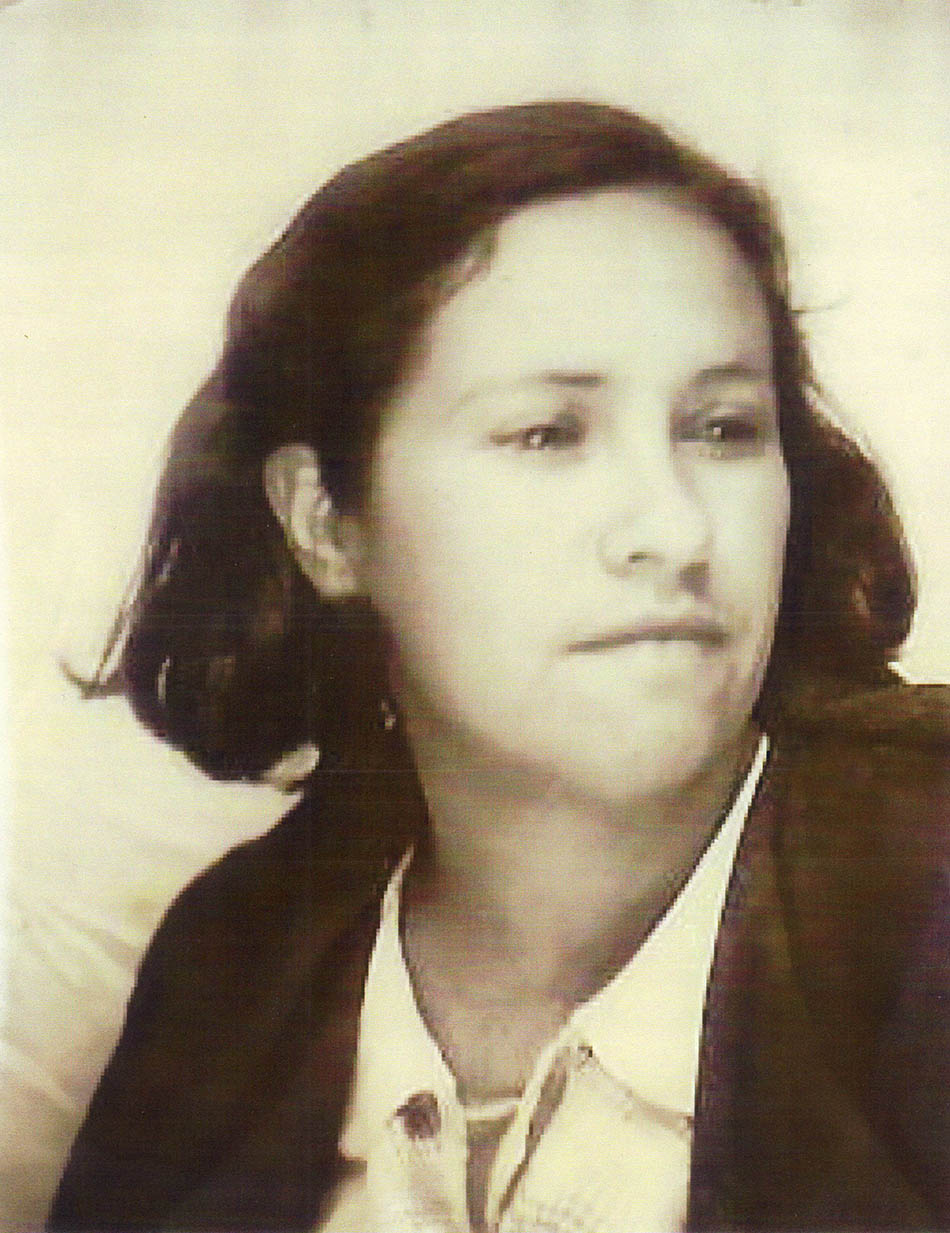
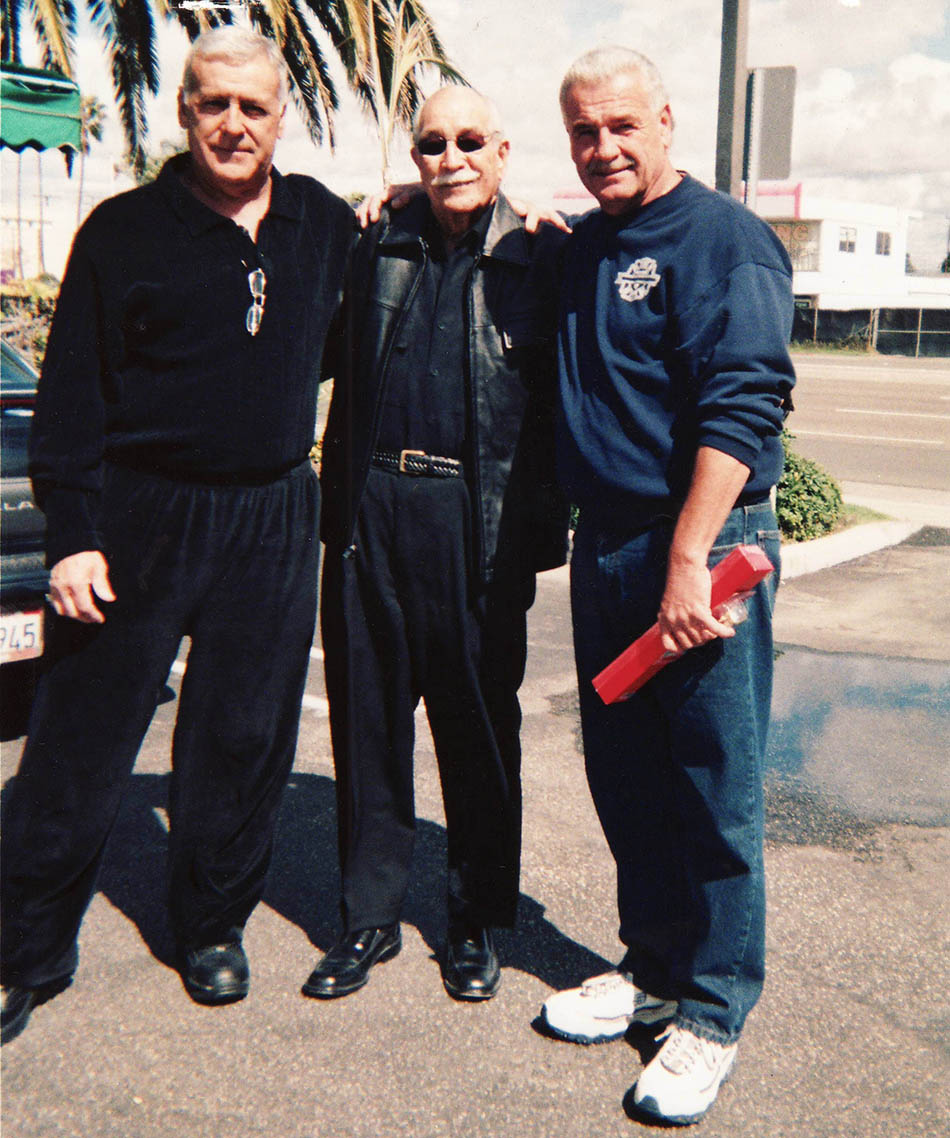
|
|


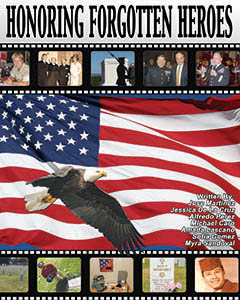
CLICK HERE FOR TABLE OF CONTENTS

|
